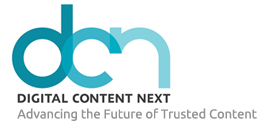Hybrid media models that blend traditional content with user-generated material, along with strategic partnerships and advanced data analytics, are emerging as essential strategies for success in today’s media landscape. According to new research by KPMG LLP, The Future of Content Spend and Business Models in Media, individual creators and streaming platforms are gaining influence, and AI tools are becoming increasingly important for both data analysis and content creation.
Content spending by top streaming platforms
The 12 leading content players studied for the report – which include Disney, Amazon, Paramount, Netflix, Comcast, and YouTube- spent about 210 billion dollars on content in 2024. This represents a 10% compounded annual growth rate since 2020. Comcast led the way in 2024 with 37 billion in spending, followed by YouTube at 32 billion, Disney at 28 billion, and Amazon at 20 billion. The top 12 spenders were primarily U.S. based platforms and media companies.
Among the big takeaways:
- Investments in live sporting events continue to rise, while investment in scripted and reality programming has slowed.
- The rising popularity of free streaming platforms such as PlutoTV and Tubi is poised to accelerate content expansion.
- The future will rely on a blend of traditional high budget film and television series material with nimbler user-generated content.
The rising impact of user-generated content
User generated content, enabled by social media platforms, has become an essential part of the media content landscape and one that increasingly overlaps traditional studio TV and film models. A few takeaways:
- The rapid expansion of user-generated content is outpacing other content categories and that trend is expected to continue.
- User-generated content has become its own genre. As such, rather than replacing traditional TV and film material, it has become a critical part of a hybrid media model.
- The line will continue to blur between traditional studio models of financing content and social media and streaming platforms that enable individuals to profit from content through ads, sponsorships, and memberships.
- Fierce competition for influential individual content creators is likely to heat up in the future, requiring innovative collaboration and partnership strategies.
Partnerships at home and abroad
To remain fully competitive, major media companies will need to partner with individual content creators, as well as other media entities, technology companies, and telecommunications outlets. It’s also essential to interact effectively with global markets.
International audiences prefer lower price points and ad-supported structures. They also gravitate towards local content, which can mean “localization” of exported U.S. material to suit international markets. To be competitive in the global marketplace, media companies need to tailor their content and services to include flexible pricing and audience customization.
AI and data analytics influence strategic content spending
Data is the key to gaining insights and making decisions that drive return on investment. The ability to leverage consumer data to enhance personalization and target content investment wisely will be critical going forward. AI utilization will be integral to this process, with AI tools increasingly relied upon to automate, enhance, and extract insights from data.
AI isn’t just playing a role in data analytics, however; it’s also impacting content. This report lists “Choose-your-own adventure narratives, automated local dialogue, and ultra-low-cost formats” among the content AI could generate. However, the authors opine that, due to the importance of human talent and fandom, AI will augment rather than take over the content production process.
Smart choices for content spending
As media continues to evolve, content leaders face pivotal choices. The blending of studios, platforms, and creators, alongside the growth of ad-supported streaming and AI-powered personalization, is changing how content is made, shared, and monetized.
To stay competitive, leaders need to adopt flexible business models, invest wisely across formats, and connect directly with audiences. Success will hinge on spending smarter by leveraging data, technology, and partnerships to grow new value in the shifting media ecosystem.













